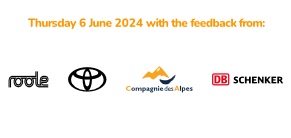SUEZ
Start of the collaboration: 2016
Departments involved: Customer Relations
Languages included: French
SUEZ is one of the world’s main groups specialising in waste and water treatment. The group comprises more than 80,000 employees worldwide. SUEZ Eau France, a subsidiary of SUEZ, has its customer feedback analysis performed by ERDIL.
Why set up an automatic customer feedback semantic analysis solution at Suez Eau France?
ERDIL’s semantic analysis has allowed us to gain insights into what’s expressed by customers and whether it is positive or negative. And the real worth of Voice of the Customer assessment lies within the ability to quantify thousands of comments.
It has also taught us to a valuable lesson: scores should be put aside to focus on feedback analysis. This really has helped us understand why customers were not satisfied.
Voice of the Customer assessment should also be carried out daily! Its exploitation is a constant challenge, a change in thinking involving acknowledgment by everyone that: “I am happy when the customer is satisfied with the answer they have received.”
How does Voice of the Customer management work at SUEZ Eau France?
The first important measure we implemented at SUEZ in order to assess the Voice of the Customer was a “barometer”. Other tools were then used to complement this process: surveys following phone calls, a discussion space on our website as well as feedback from operational departments.
At SUEZ Eau France, the Voice of the Customer is widely relayed at both national and regional levels. We share the Voice of the Customer through different means of communication (summaries, reports…) featuring the associated verbatim and graphs extracted from ERDIL’s output interface Esatis.
Our newsletter “As told by our customers” includes each month a topic we either pride ourselves on being quite good on or, on the contrary, for which there is still work ahead! Thanks to verbatim analysis, we are able to monitor what our customers want to express on this topic, regardless of any internal performance: what do our customers think of our call centre agents, our websites, the water quality?
A couple of months ago, we have also started implementing ERDIL’s E-letters, allowing the sharing of customised reports with each region.
What changes have you observed since you have started using ERDIL’s semantic analysis solution?
When I took up my position, Esatis was only available for SUEZ Eau France’s Customer Relationship management. It has since then been set up for collaborators at regional level, allowing everyone to detect irritants within their customer comments and thus swifter reaction when planning corrective measures.
Satisfaction indicators monitoring used conjointly with semantic analysis has allowed us to identify priority areas and to plan continuous improvement measures.
Can you provide some concrete examples of insights, key figures or ROIs gained with the help of Suez Eau France customer feedback analysis?
For SUEZ, Voice of the Customer analysis has been a way to obtain a panoramic view of our company and provided services that went beyond mere operational lens.
The analysis results exploited in Esatis have allowed us to look beyond mere data volume and occurences. We have been able to observe which topics occur most frequently in customer comments and pinpoint which ones generate a high level of dissatisfaction, and mark them as high-priority areas of improvement.
Analysing the Voice of the Customer also allows us to improve our employees’ training and expression in order to have them provide better counseling to customers and better management of their requests.
The Loyalty Impact Score visualisation is very insightful and permits focusing on a certain amount of verbatim which mention a same concept and to perform a deep dive into points that are less frequently mentioned but are always negatively connotated. The L.I.S. has allowed us to work on processes and collaborative instructions in order to implement measures throughout all customer service departments, ranging from headquarters to regional offices, and to convey to them the Voice of the Customer.
What have been the latest evolutions for your department?
We launched a new survey, in order to assess customer satisfaction following written response (e-mail and regular mail).
With this new feature, we have a global overview of customer satisfaction on all of our customer relationship channels and as such we are able to develop further our actions for the continuous improvement of our services.
A verbatim that you’ve found unusual or which has left an impression on you?
Among the most unusual ones, I would say a verbatim in which one of our customers simultaneously mentioned an issue with the rusty colour of their water (the consequence of an exercise performed by firemen) and the lack of iron in their body. The relation between these two things was quite comical!
I think that humour, especially when expressed through the Brèves de Verbatim, is a good way to get our teams invester into verbatim and the Voice of the Customer.
